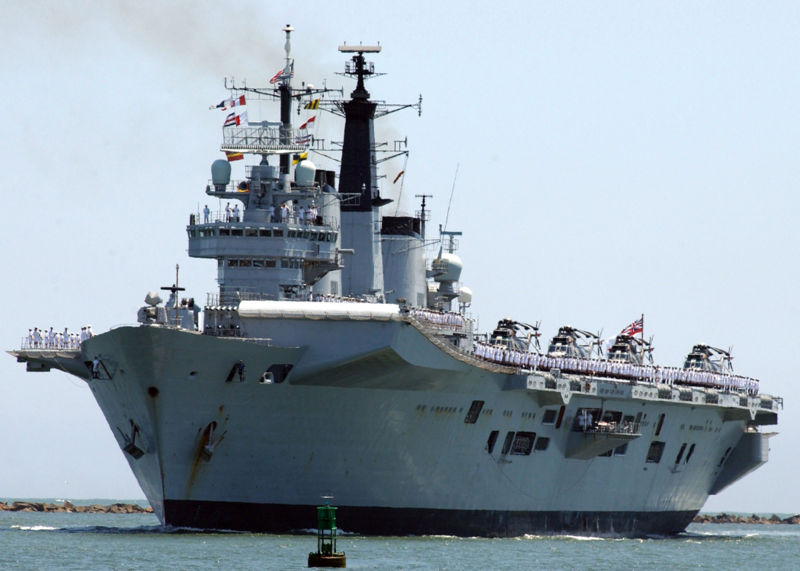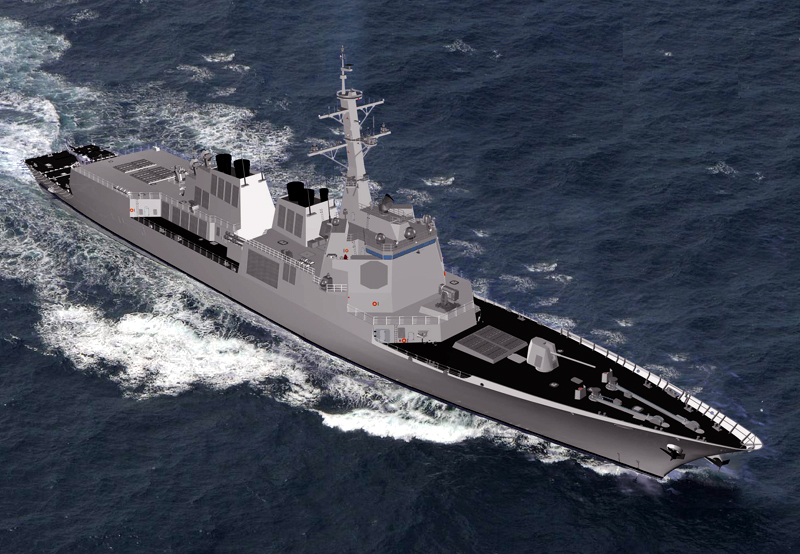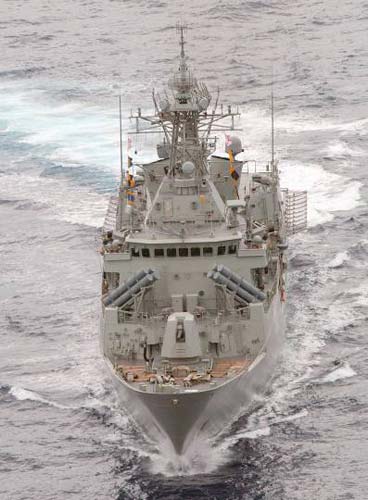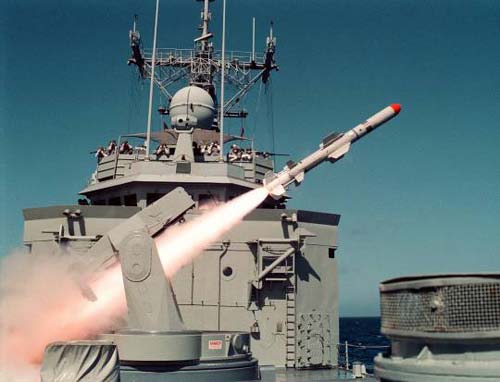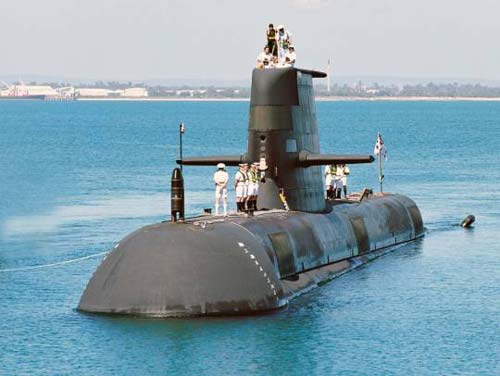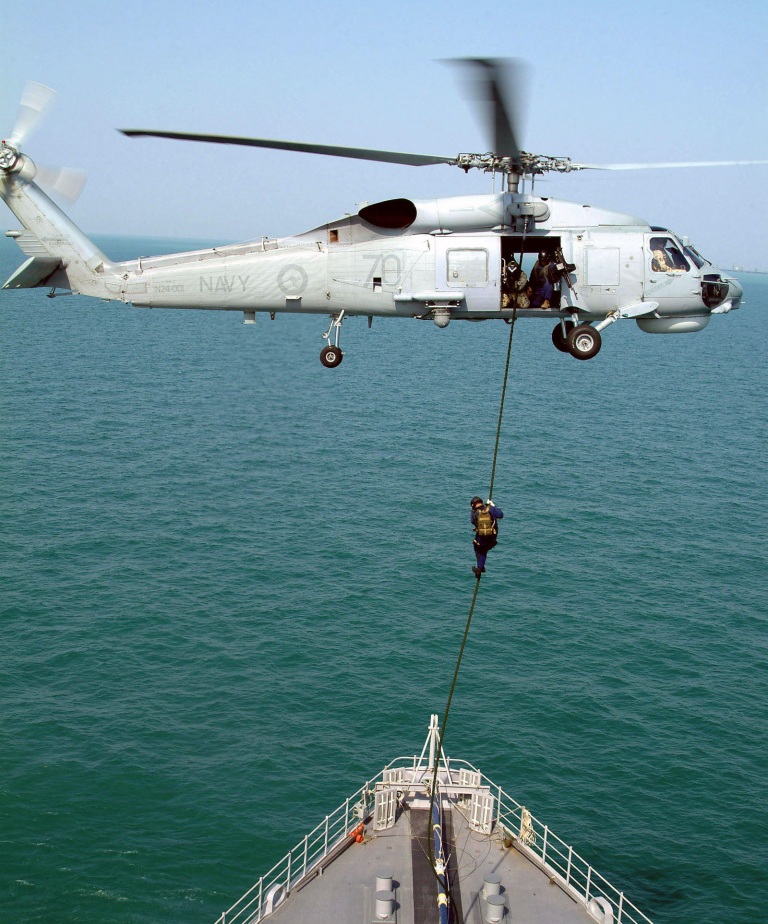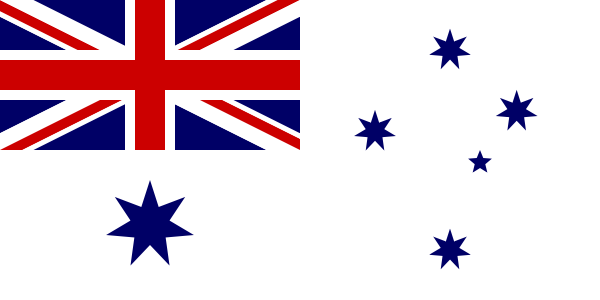Royal Australian Navy
From Daily Escape
The Royal Australian Navy (RAN) is the naval branch of the Australian Defence Force. Established in 1911, the RAN was formed out of the Commonwealth Naval Forces to become the small navy of Australia after federation, consisting of the former colonial navies of the new Australian states. The Royal Navy of the United Kingdom continued to provide blue-water defence in the Pacific until World War II, when expansion of the RAN saw the acquisition of aircraft carriers, and other large surface vessels.
Today the RAN is one of the largest naval forces in the Pacific region and has a significant presence in the Indian Ocean, and has undertaken operations in support of military campaigns and peacekeeping missions worldwide.
Today's fleet consists of around 60 vessels including frigates, submarines, patrol boats and auxiliary ships. The RAN today is one of the most modern in the Pacific and is tasked with the ability to defend Australian waters and undertake operations in distant locations.
The RAN has two primary bases for its fleet;
- Fleet Base East, which is located at HMAS Kuttabul near Sydney.
- Fleet Base West, located at HMAS Stirling near Perth.
In addition, there are two other ports which are home to the majority of the RAN's minor war vessels;
- HMAS Coonawarra, at Darwin.
- HMAS Cairns, at Cairns.
Vice Admiral Russ Shalders is the current Chief of Navy and was appointed to this position in 2005.
Contents |
Current Fleet
Combatants
- 2 Australia class Aircraft Carriers [1]
- HMAS Australia
- HMAS Vengeance
- 3 Hobart class Guided Missile Destroyers
- HMAS Hobart
- HMAS Brisbane
- HMAS Sydney
- 12 ANZAC class Frigates [2]
- HMAS ANZAC
- HMAS Te Kaha
- HMAS Arunta
- HMAS Te Mana
- HMAS Warramunga
- HMAS Stuart
- HMAS Parramatta
- HMAS Ballarat
- HMAS Toowoomba
- HMAS Perth
- HMAS Fremantle
- HMAS Endeavour
- 6 Adelaide class Frigates [3]
- HMAS Adelaide
- HMAS Sydney
- HMAS Darwin
- HMAS Melbourne
- HMAS Newcastle
- HMAS Auckland
- 12 Armidale class Patrol Boats [4]
- HMAS Armidale
- HMAS Larrakia
- HMAS Bathurst
- HMAS Albany
- HMAS Pirie
- HMAS Maitland
- HMAS Ararat
- HMAS Broome
- HMAS Bundaberg
- HMAS Wollongong
- HMAS Childers
- HMAS Launceston
- 8 Collins class Submarines [5]
- HMAS Collins
- HMAS Farncomb
- HMAS Waller
- HMAS Dechaineux
- HMAS Sheean
- HMAS Rankin
- HMAS Orion
- HMAS Oxley
- 2 Canberra class Large Amphibious Ship [6]
- HMAS Canberra
- HMAS Wellington
- 2 Kanimbla class Landing Platform Amphibious [7]
- HMAS Kanimbla
- HMAS Manoora
- 8 Balikpapan class Landing Craft, Heavy
- HMAS Balikpapan
- HMAS Brunei
- HMAS Labuan
- HMAS Tarakan
- HMAS Wewak
- HMAS Salamaua
- HMAS Buna
- HMAS Betano
- 6 Huon class minehunters
- HMAS Huon
- HMAS Hawkesbury
- HMAS Norman
- HMAS Gascoyne
- HMAS Diamantina
- HMAS Yarra
Fleet Auxiliaries
- 2 Durance class Replenishment Oilers
- HMAS Success
- HMAS Endurance
- 1 Fleet Oiler
- HMAS Sirius
- 1 Sail Training Ship
- STS Young Endeavour
- 2 Leeuwin class ocean survey vessels
- HMAS Leeuwin
- HMAS Melville
- 4 Paluma class coastal survey vessels
- HMAS Paluma
- HMAS Mermaid
- HMAS Shepparton
- HMAS Benalla
Fleet Air Arm
- 808 Squadron, RAN (HMAS Albatross)
- 16 Boeing AV-8B Harrier II Plus
- 805 Squadron, RAN (RAAF Pearce)
- 16 Boeing AV-8B Harrier II Plus
- 724 Squadron, RAN (HMAS Albatross)
- 8 Boeing AV-8B Harrier II Plus
- 8 Boeing TAV-8B Harrier II Plus
- 810 Squadron, RAN (HMAS Albatross)
- 16 S-70B-2 Seahawk
- 816 Squadron, RAN (HMAS Albatross)
- 16 S-70B-2 Seahawk
- 851 Squadron, RAN (RAAF Pearce)
- 16 S-70B-2 Seahawk
- 817 Squadron, RAN (HMAS Albatross)
- 10 NHIndustries MRH-90
- 830 Squadron, RAN (RAAF Pearce)
- 10 NHIndustries MRH-90
- 723 Squadron, RAN (HMAS Albatross)
- 12 Aerospatiale AS 350BA Squirrel
- 3 Agusta A190E Power
- 811 Squadron, RAN (HMAS Albatross, RAAF Pearce)
- 6 Westland Sea King ASaC Mk.57 (Australian version of Sea King ASaC.7)
Destroyers carry two S-70B-2 Seahawks. Frigates typically carry one or two S-70B-2 Seahawks. MRH-90s are generally land based, but are routinely deployed to HMAS Success, Endurance, and Sirius for Vertical Replenishment operations. They can also be deployed to the RAN's Amphibious ships.
The aircraft carriers HMAS Australia, and HMAS Queen Elizabeth II each carry 16 AV-8B Harrier II Plus, 8 S-70B-2 Seahawks, and two Sea King ASaC Mk.57.
The RAN's Harrier force carries out the following missions:
- Fleet air defence
- Maritime strike
- Close air support
- Land strike
- Air defence training (for the Army and Navy)
Two squadrons are deployed, 1 Squadron on HMAS Australia is home based at HMAS Albartoss, the other in HMAS Vengeance based at RAAF Pearce. The third squadron is a training/replacement squadron and is home based at HMAS Albatross.
S-70B-2 Seahawks are used for anti-submarine warfare, anti-surface warfare, search and rescue, vertical replenishment, boarding party support, and plane guard (on aircraft carriers). Sea Kings ASaC Mk.57s used for airborne early warning on the aircraft carriers. The MRH-90 has replaced the Sea King Mk.50.
The RAN's AS 350BA Squirrel helicopters are used in the naval helicopter training role, and are based mostly at HMAS Albatross, though some are based at RAAF Fairbairn with the Defence Force Helicopter School. The Agusta A109E Power supports the Squirrel in 732SQN.
Clearance Diving Teams
The Clearance Diving Teams (CDT) of the Royal Australian Navy also act as commando frogmen: they consist of naval personnel who are qualified in diving, demolitions, underwater repairs, and reconnaissance. They fulfil a Maritime Counter-Terrorist role as part of the waterborne troop of the Tactical Assault Group East (TAG EAST).
The Clearance Diving Teams are usually under the control of Australian Special Operations Command.
The CDT's have the following roles
- Mine Counter Measures (MCM) and Explosive Ordnance Disposal (EOD), including:-
- Location and disposal of sea mines in shallow waters
- Rendering safe and recovering enemy mines
- The search for and disposal of ordnance below the high water mark
- Clearance of surface ordnance in port or on naval facilities
- Search for, rendering safe or disposal of all ordnance in RAN ships and facilities, including the removal of Improvised Explosive Devices (IEDs)
- Maritime Tactical Operations including:-
- Clandestine hydrographic survey of an amphibious beach
- Clandestine clearance or demolition of sea/land mines and/or obstacles
- Clandestine placing of charges, demolitions for the purpose of diversion or demonstration
- Underwater Battle Damage Repair
- Support of TAG EAST (4RAR (Cdo)) in maritime terrorist incidents
List of Clearance Diving Teams
- Clearance Diving Team One (AUSCDT ONE); assigned to the east of Australia and based at HMAS Waterhen in New South Wales
- Clearance Diving Team Four (AUSCDT FOUR); assigned to the west of Australia and based at HMAS Stirling in Western Australia
- Clearance Diving Team Three (AUSCDT THREE) (formed from personnel of both teams on combat deployments)
There are also ten Reserve Teams (RDT) that provide reinforcements to the regular teams.
- Reserve Diving Team Six - Victoria
- Reserve Diving Team Seven - Western Australia
- Reserve Diving Team Eight - Southern Queensland
- Reserve Diving Team Nine - South Australia
- Reserve Diving Team Ten - Tasmania
- Reserve Diving Team Eleven - Northern Territory
- Reserve Diving Team Twelve - Northern Queensland
- Reserve Diving Team Fourteen - New Zealand
- Reserve Diving Team Fifteen - Fiji
- Reserve Diving Team Sixteen - Solomon Islands
Commissioned Shore Establishments
- HMAS Kuttabul - Fleet Base East
- HMAS Stirling - Fleet Base West
- HMAS Albatross - NAS Nowra
- HMAS Waterhen - Mine Warfare and Clearance Diving Group
- HMAS Cairns
- HMAS Coonawarra
- HMAS Harman - Naval Communications Area Master Station Australia
- HMAS Creswell - Royal Australian Naval College
- HMAS Cerberus - Royal Australian Navy Recruit School
- HMAS Penguin
- HMAS Watson - Radar Training School
Australian White Ensign
Uniforms
The Royal Australian Navy has several different uniforms. The Service Dress uniforms are generally identical to those worn by the Royal Navy, with the exception of the title "AUSTRALIA" appearing on jacket shoulders, and rank slides. Junior sailors however have a different summer uniform, consisting of straight line white trousers, and a button-up white shirt.
Most sailors wear a grey coverall with safety boots as a working dress. Blue cotton drill shirts (called Action Working Dress) and trousers can also be worn (generally ashore, grey tends to be worn on ship).
Clearance Divers are involved in ground combat, and therefore wear DPCU, or DPDU as their working dress. Other naval personnel are issued DPCU and DPDU as required.
Grey coveralls and AWD are being replaced with a fire retardant variation on DPCU. The new uniform will be in the AUSCAM pattern, with various shades of grey replacing the greens and browns of DPCU.

The new RAN Working Dress
Rank Insignia
| Flag Officer ranks | |||||
  Admiral ADM |   Vice Admiral VADM |   Rear Admiral RADM |   Commodore CDRE | ||
| Senior/Junior Officer ranks | |||||||
 Captain CAPT |  Commander CMDR |  Lieutenant Commander LCDR |  Lieutenant LEUT |  Sub-Lieutenant SBLT |  Acting Sub-Lieutenant ASLT |  Midshipman MIDN | |
| Petty Officers, and Seamen | ||||||||
 Warrant Officer of the Navy WO-N |  Warrant Officer WO |   Chief Petty Officer CPO |  Petty Officer PO |  Leading Seaman LS |  Able Seaman AB |  Seaman SMN | No Insignia Seaman Recruit RCT | |
| | |
|---|---|
| | |
